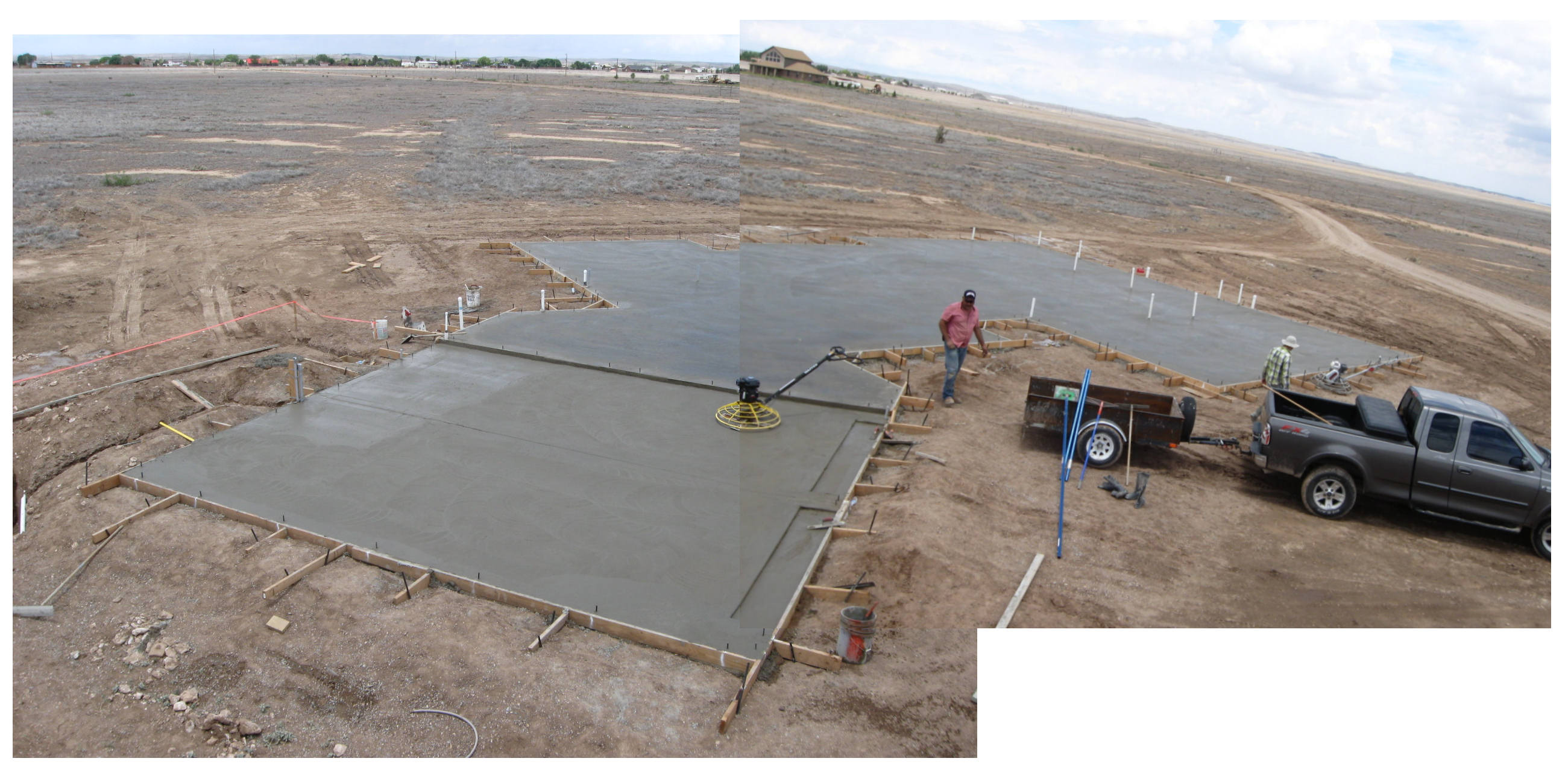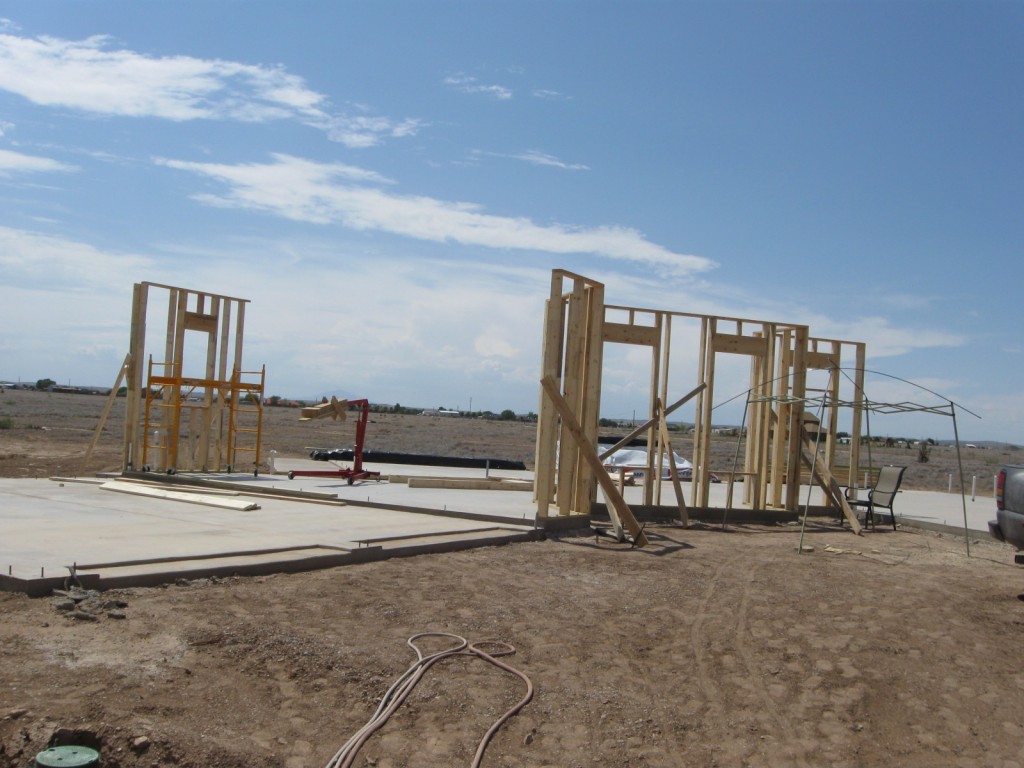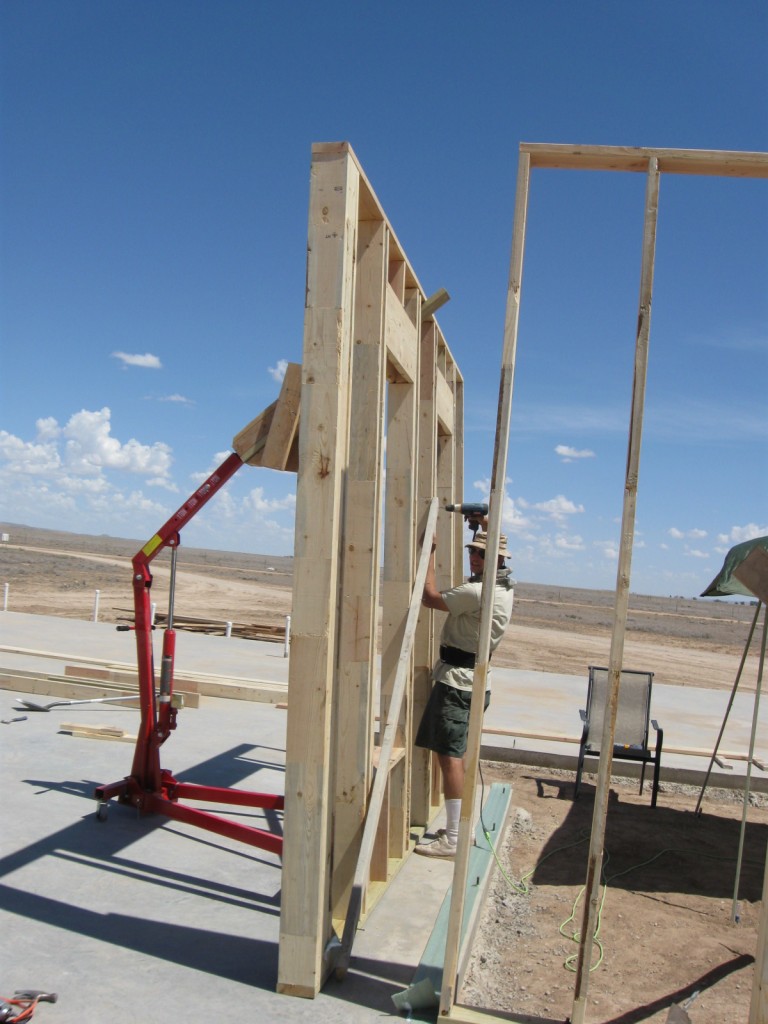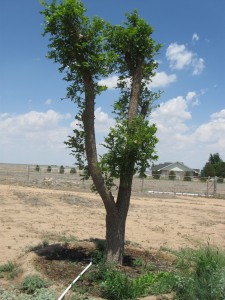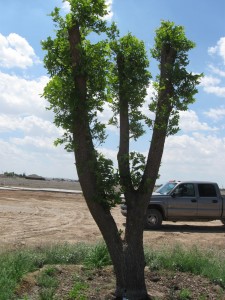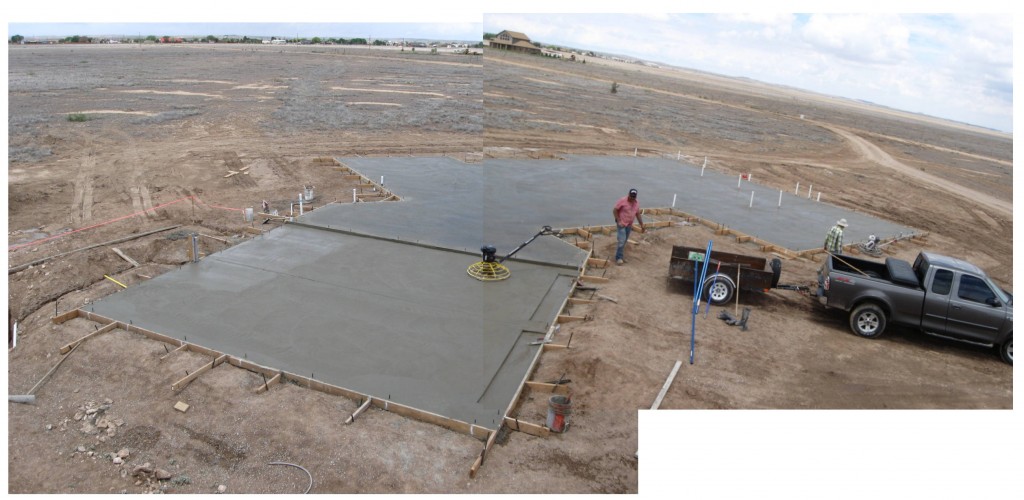This morning, as the sun was rising, I filmed a quick vid of the framing progress:
Month: July 2012
3 Full days of Framing Progress

Today we finished our 3rd full day of framing. Our progress includes 9 completed walls and one completely cut, laid out and ready to frame and erect. With each day we make better progress, capitalizing on lessons learned from previous days. Last night at 2230 hours I realized I needed to frame the garage to house wall at a different height. The garage ceiling is at 8′ and the house at 10’/ There is a 3.5″ step down to the garage, and the garage ceiling joists are trusses at 12″ height. Adding all this together required additional calculations and the us of a slightly shorter header above the garage to laundry room door. Thankfully we did not start framing there yesterday. As you can see from the pano, the height difference is evident. The space above the ground will be a hobby room with 8′ ceilings. Dropping the garage height allowed us to gain most of the room above the garage without having too narrow a room above due to the pitch of the ceiling.
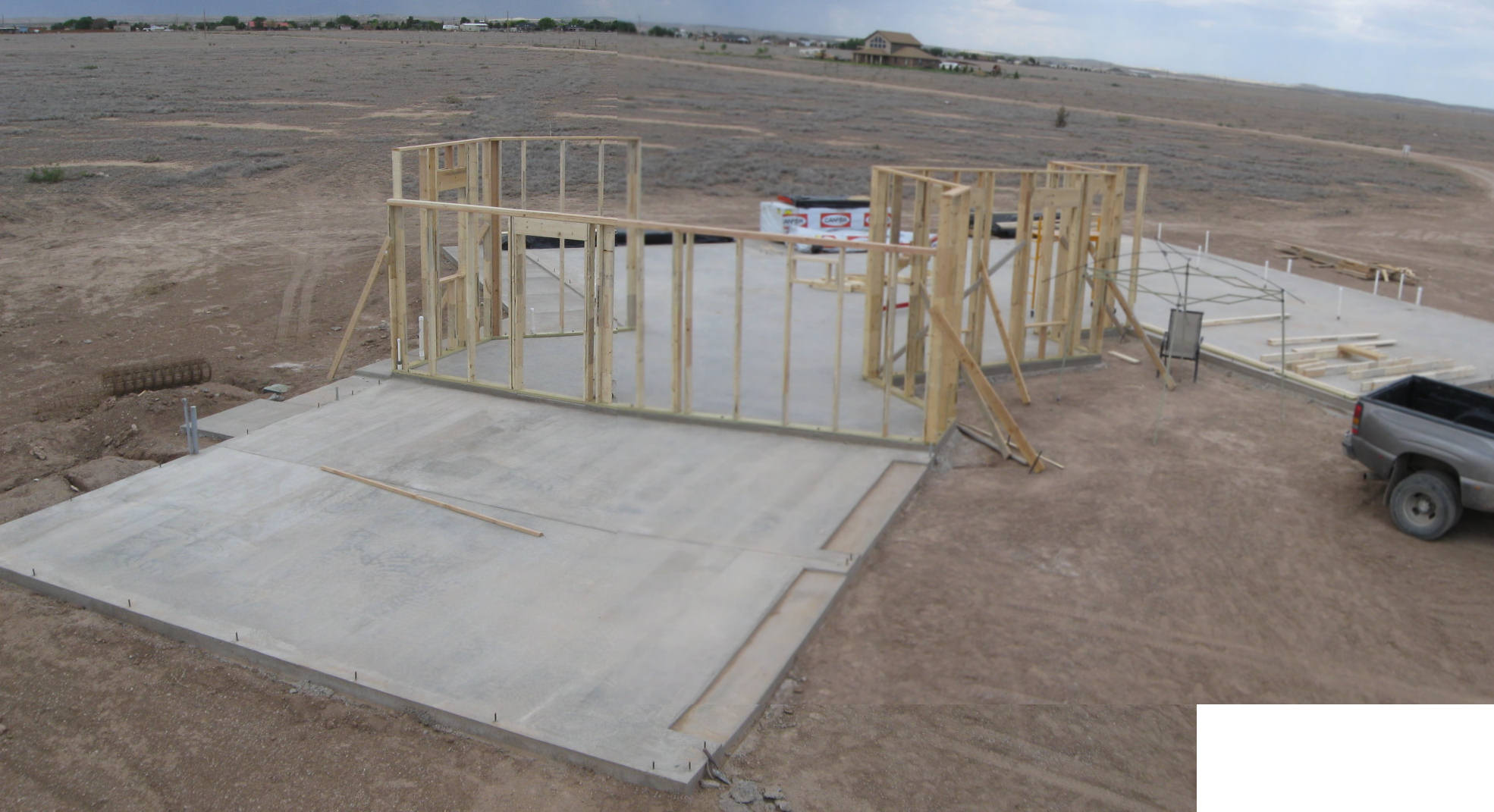
Framing Continues
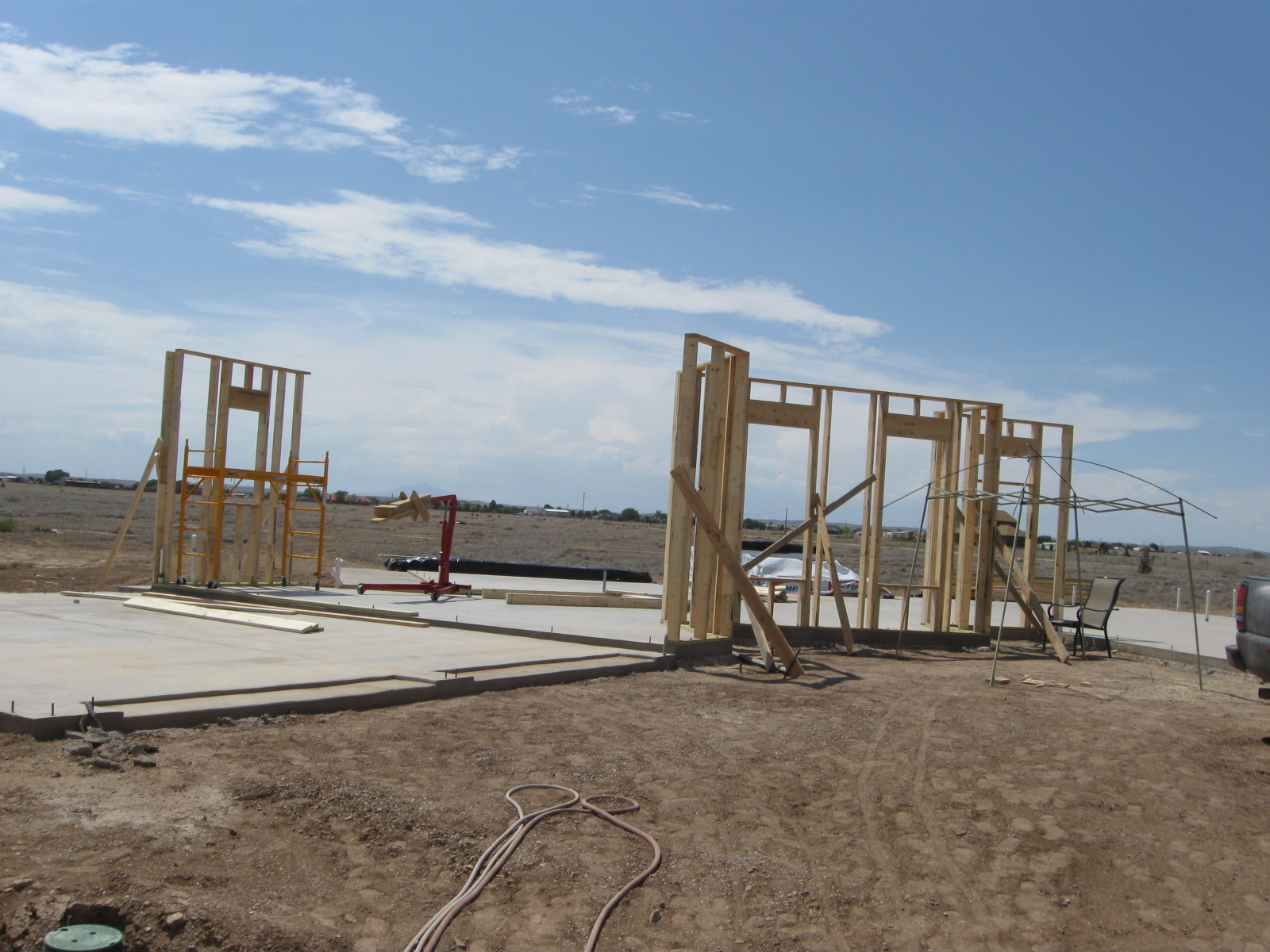
OK… this is going to be a really short post. We are on our way to pick up our boys from Mom and Dad’s, but wanted to post a photo of the progress thus far. We have done several short walls, and have most of the wall between the house and garage cut and ready for assembly. The hoist works really well on shorter sections of wall… we even lifted the laundry room wall with the window over the water supply line without any difficulty. We had a bit of delay this morning due to a little rain. We spent some time covering all the wood and getting tools out of the rain, but soon were able to continue.
Hoisting the First Wall
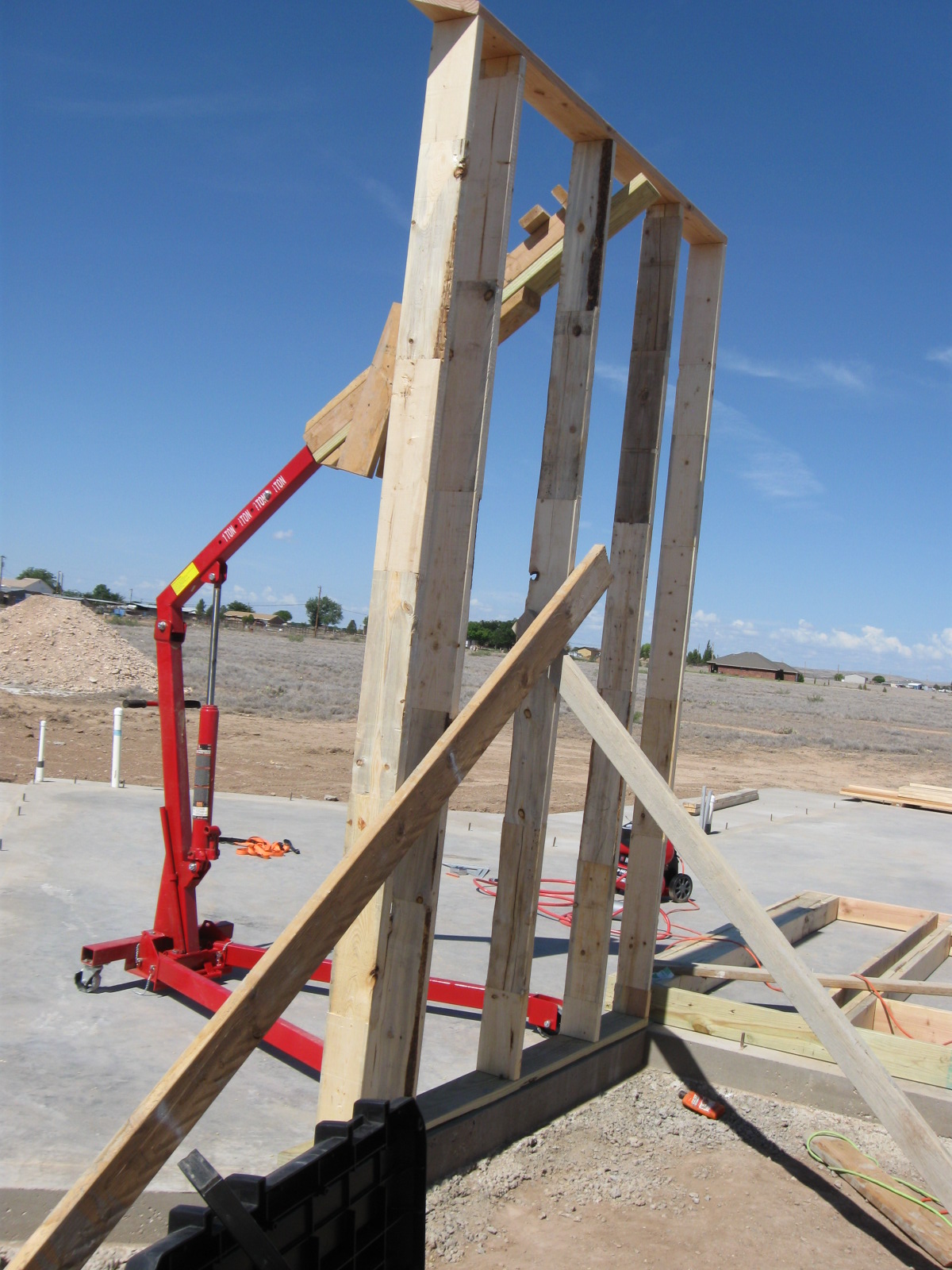
Since we decided to do as much of the framing as we can ourselves, the question about how to lift those heavy wall sections came into play. We decided to try out the use of our engine hoist with an extension to see if we can get some mechanical help. Thinking that we’d like to try it out on a small section of framing first, we used it very successfully on a small section of wall on the front of the house. After preassembling the wall section on the concrete pad, we were able to lift it into place using our engine hoist, positioning the wall onto the foundation bolts and then securing it with braces.
Before lifting the wall into place, we put down a bit of caulk and foam sill sealer.
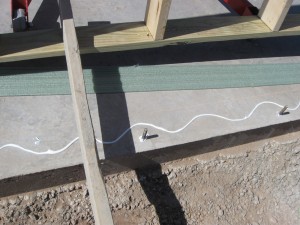

Then, using our engine hoist, we lifted the wall section into place…
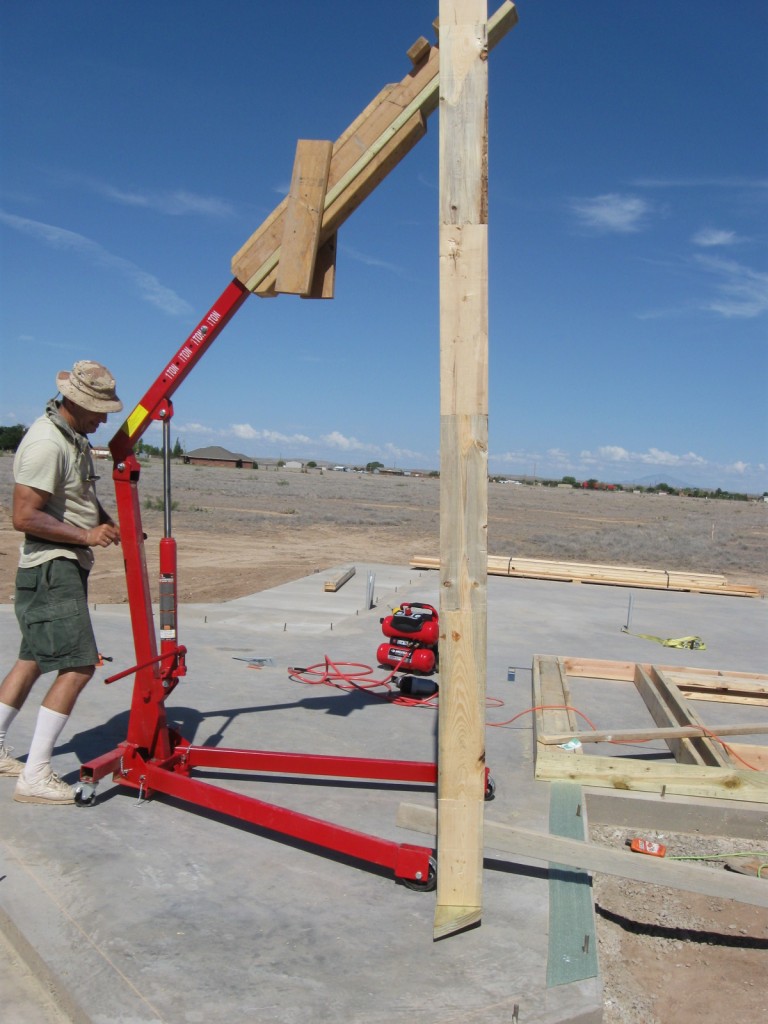
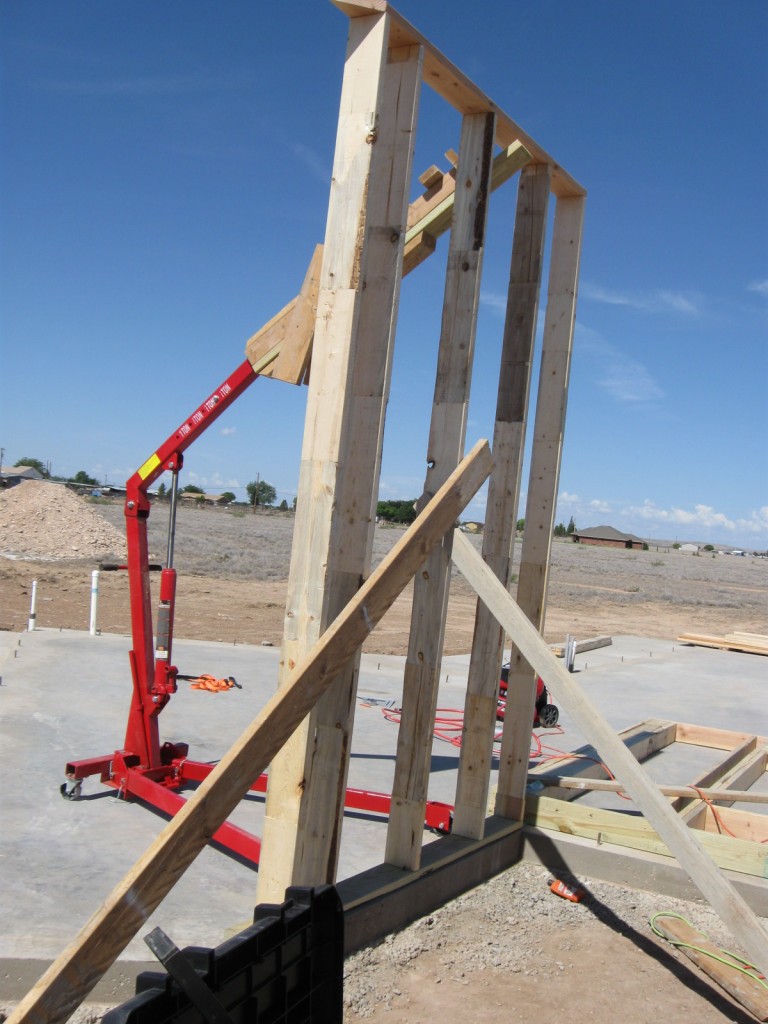
For a larger wall section, however, additional support must be made to the frame so that the top plate does not come apart due to the weight of window headers, etc.
(hmmm, do you think this is the sad voice of experience?)
Framing the First Wall

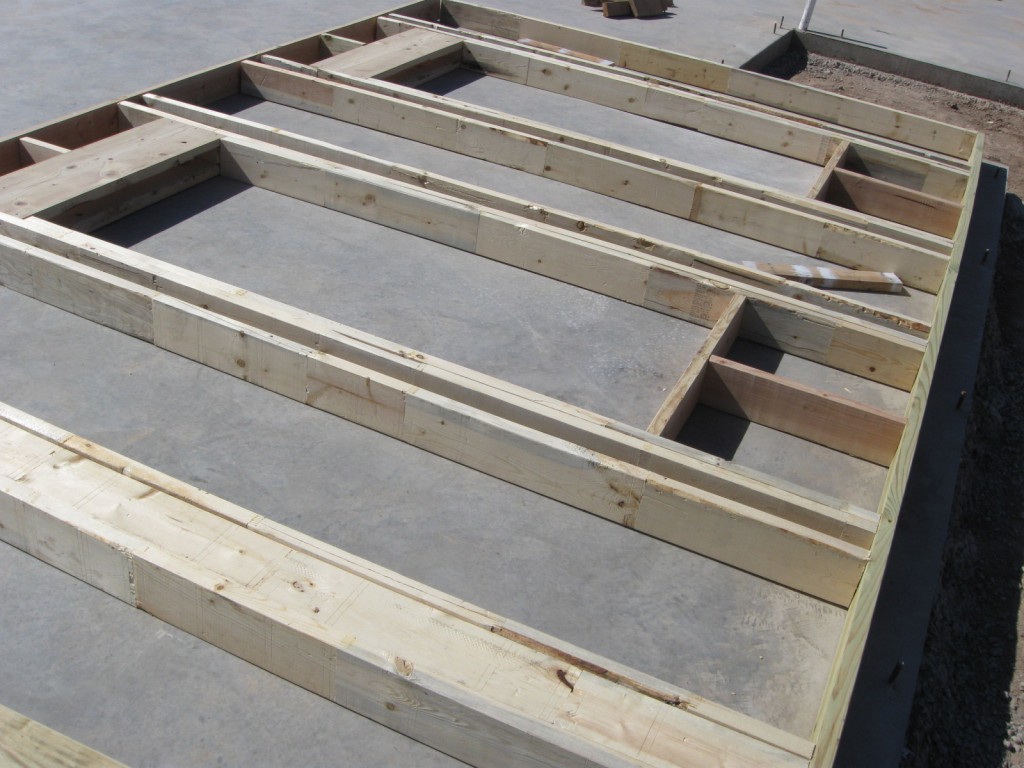
With quotes as high as $14,500 to frame the house (excluding lumber and material and we already have the roof trusses orderd and paid for) we decided to frame the first floor ourselves. Depending on how it goes we are looking at using a sub-contractor to set the trusses, frame out the room above the garage and add roof sheathing. Rather than using hammer and nails we decided to purchase a framing gun. I purchased a low-end Porter and Cable 30degree framing nail gun. The old compressor I had just was not up to the task so I also purchased a 10 gal. compressor. Granted, these are costs for things I may not use often, but with the massive savings from DYI, we will be well under budget.
We spent the better part of the morning poring over different framing books again to get it right. I drafted a diagram for laying out the different types of windows and doors with measurements for all the studs, jack studs, cripple studs and sill plates. Since the types of windows are few, most of the rough openings will be similar. We are following standard convention for laying out the top and bottom plates, and marking openings and stud positions. By laying out the top and bottom plates at the same time, we will make fewer mistakes. We are using 116 5/8″ wall studs to frame a 10′ ceiling height. These arrived pre-cut and will save much time for us. All we have to do is layout the plates,cut jack and cripple studs, cut headers and nail it all together. Once we got our stuff all in one bag and actually started the layout, it went rather quickly, except for the “new” compressor which does not work automatically. When the pressure drops below the dialed setting, it is supposed to kick on and bring the pressure back up. It would not do so, so I have to take it back. It slowed our progress so we did not actually finish the first wall. The enclosed images show our progress. Once we have our equipment working, we should be able to make rapid progress.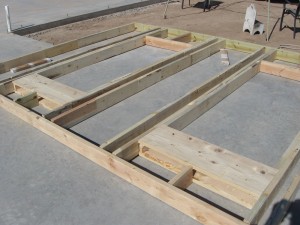
Framing Lumber Delivered

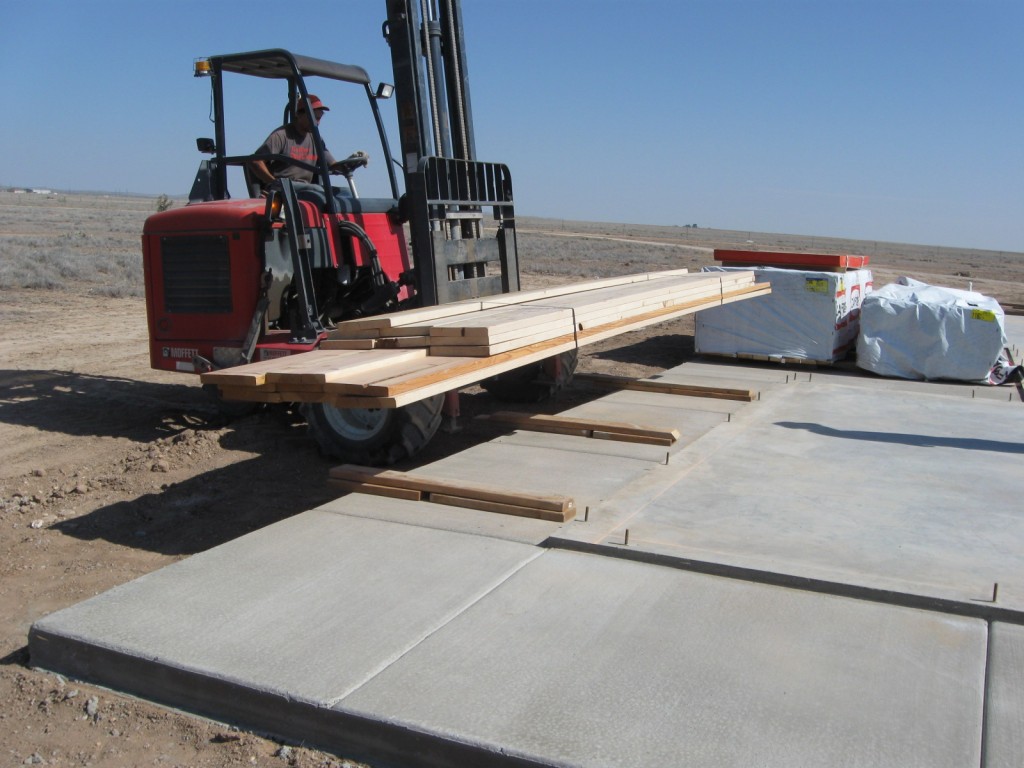
This week we checked everyone’s prices for framing lumber and materials and evaluated services, lumber return policy and service. We selected a local company, Roswell Do it Center, to provide our lumber and framing materials. We set up a draw account to obtain contractor discount on materials and scheduled our first lumber delivery for Friday. We will frame the exterior walls first, then the interior partitions. THis way we will only have the minimum of lumber required on site. More lumber clogs up the site and the longer it sits, the more prone it is to warping and damage.
We prepared the back porch by aligning the 2×6’s from the form boards. The lumber arrived on a large truck and the driver used the fork lift to position it on our scrap wood. This way the wood will sit on a level surface, off the ground and will not sit in pooling water (like it ever rains here :-)), and it will not warp as much as sitting on the uneven ground. 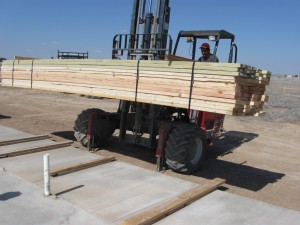
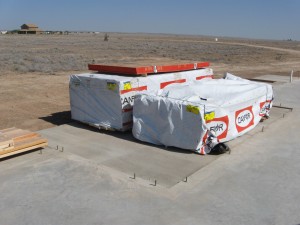
Porch and Patios Poured

We’ve decided there is a direct correlation between concrete pouring on our homestead and rain. As with the main foundation pour, the night before the pouring of our porch and patio, we got a heavy rain. As with the main foundation, there was no problem caused by the rain… We wanted to pour the porches and patio before the framing so that we would have that complete before framing out the large overhang on the back side of the house, which will require load-bearing pillars.
Here is a little photo of back porch area after the pour:
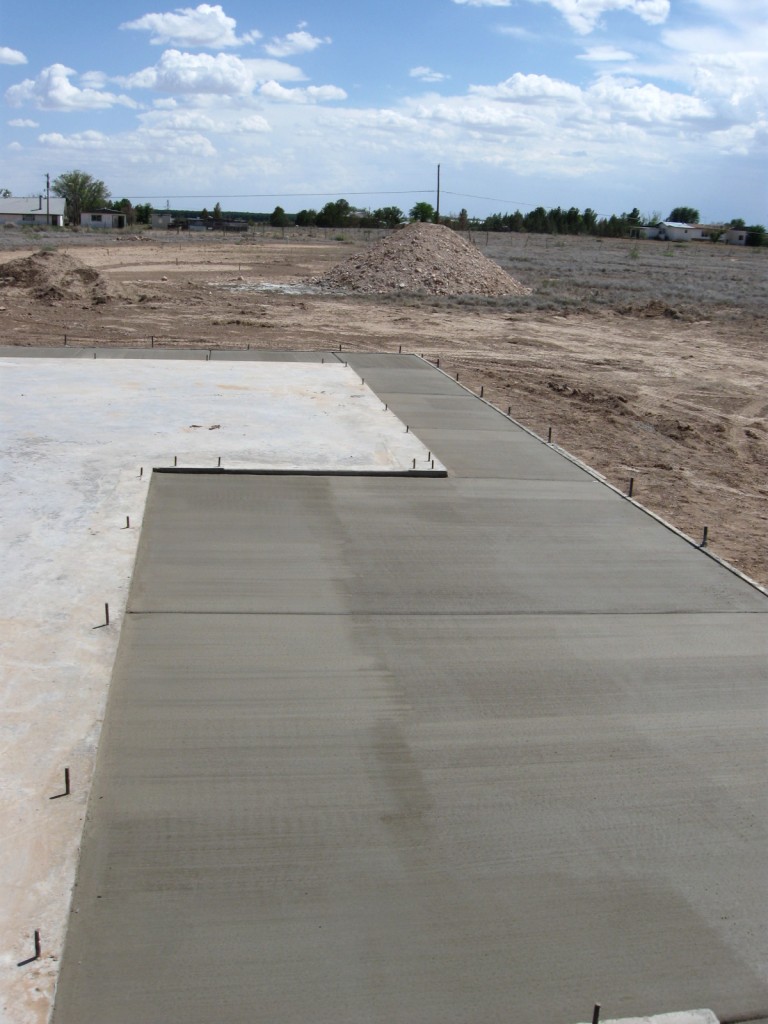
Tree Update
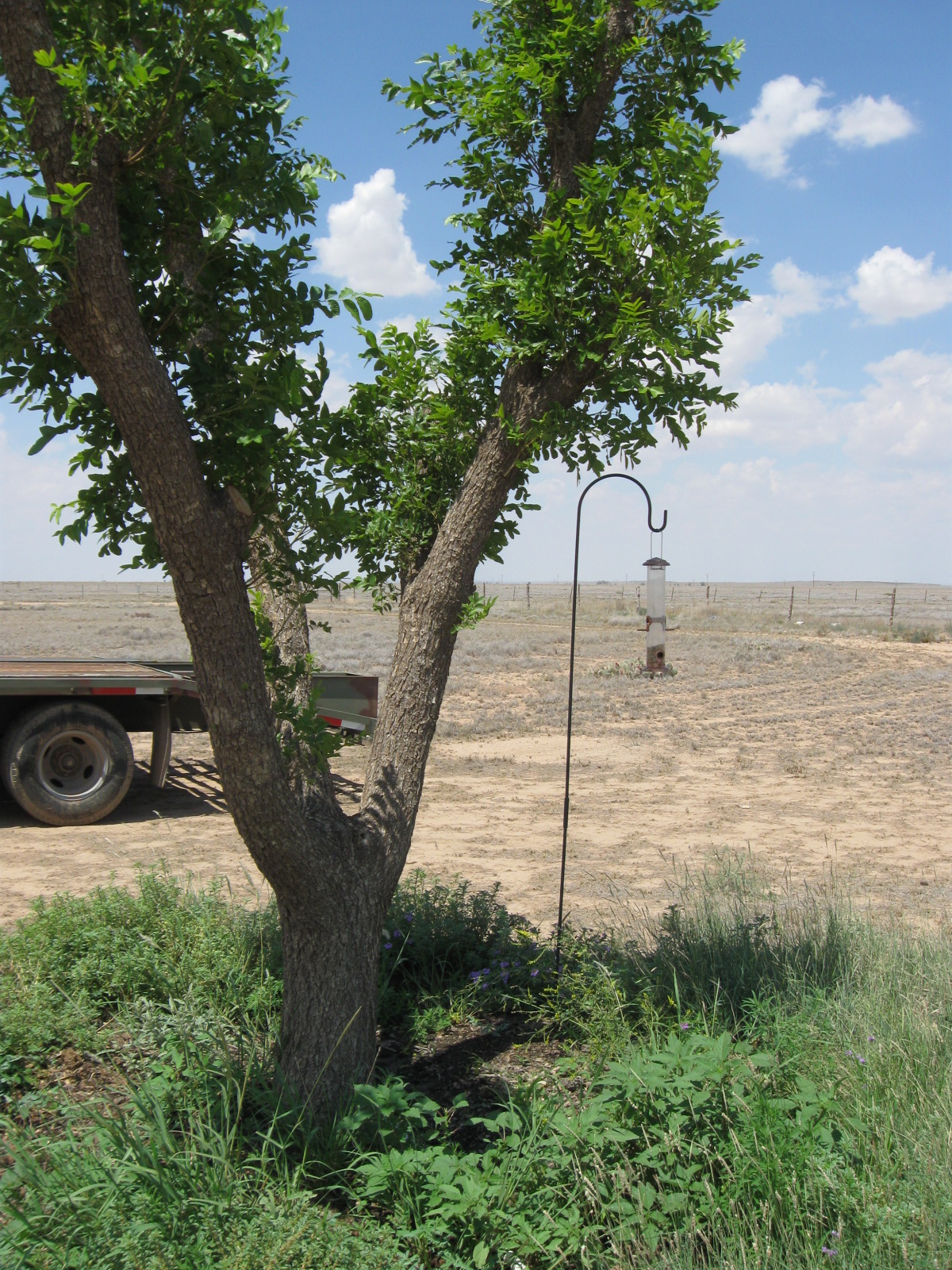
For any readers who remember how our pecan trees looked when they were first transplanted, here are a few photos of the progress of their growth after two months. The photos were taken July 12: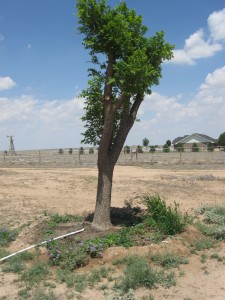
I’m also including a couple of photos of the nectarine and peach trees that are thriving… and a shot of a bird’s nest in one of the trees. We also planted some calendula under each pecan tree… we expect beautiful flowers soon.

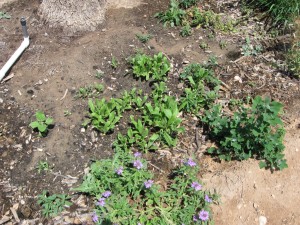
We have modified the watering schedule to three times/day for each tree. As the trees become more established, we’ll go to less frequent, but very deep waterings.
Bartlett Pears

OK… to be fair, this isn’t exactly on the Homestead, but yesterday I helped pick 4 bushels of Bartlett Pears from my parents’ tree.
For the past few days, we have been trying the pears to see if they easily detach from the tree when moved sideways from the stem. Yesterday morning, after a quick trip to the (somewhat disappointing) local farmer’s market, the pears snapped right off the tree, showing us that it was time to harvest.
From an article sent to me by a very good friend, we learned that the pears should be ripened in a specific way to optimize texture and taste. So… after picking all the pears we could reach, we will be chilling them for two days in the coldest part of the refrigerator, then letting them ripen for 5-7 days in Mom’s basement. After that, we’ll be canning, making jams and fruit leathers and eating them fresh.
Here’s a photo of almost the entire harvest (1/2 bushel was already in a neighbor’s basement):
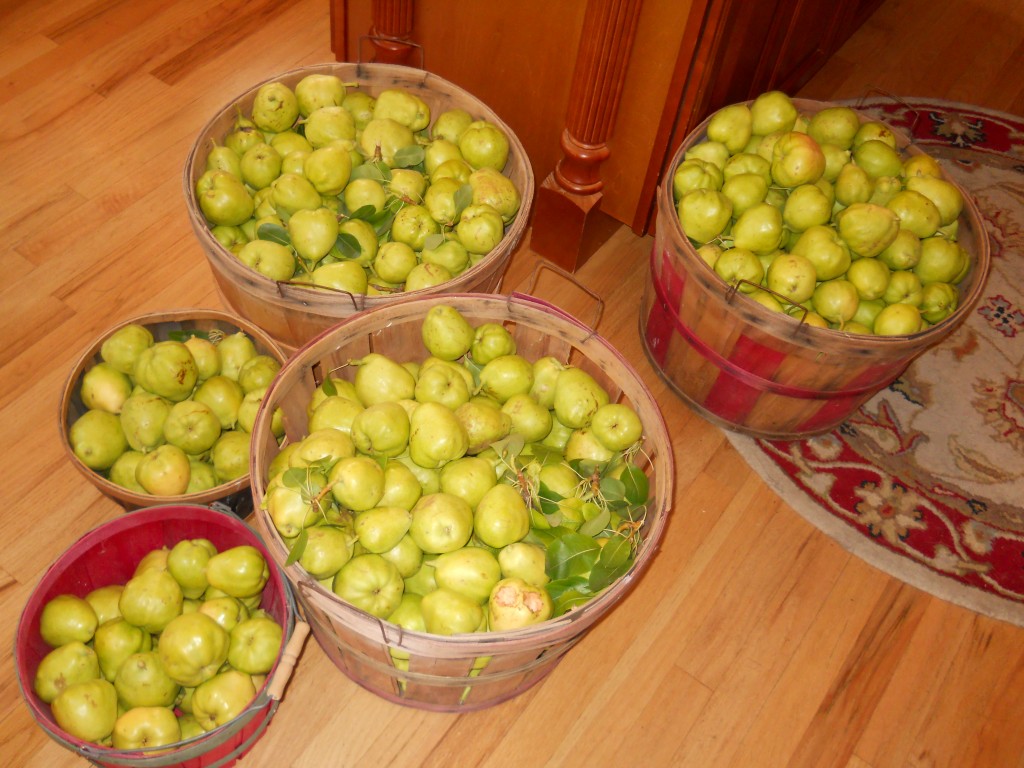
Completed Slab
